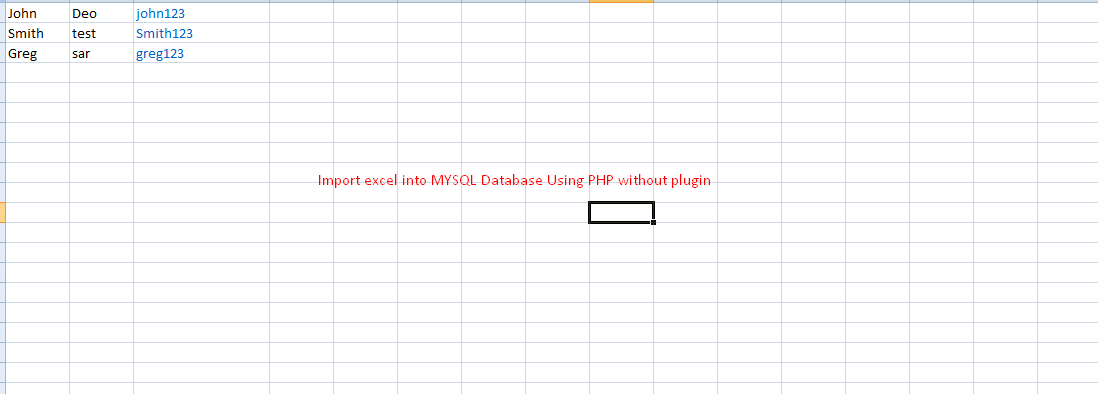HTML Code: form.html
Choose CSV File to Import Data
<html>
<head>
</head>
<body>
<form action="import.php" method="post" enctype="multipart/form-data">
<div>
<label>Import CSV File:</label>
<input type="file" name="filename" id="filename">
<button type="submit" id="submit" name="submit">Upload</button>
</div>
</form>
<body>
</html>
In this PHP code, I specified the array of allowed file type and check the uploaded file type. The excel file is uploaded to a target and its data are parsed using reader functions. It computes the number of sheets and runs a loop to parse data sheet by sheet. For each sheet iteration, I have created a nested loop for parsing data row by row. After reading the non-empty row data, I run the database insert and show the response.
PHP Code: import.php
$servername = "localhost";
$username = "root";
$password = "";
$dbname = "test";
$conn = mysqli_connect($servername, $username, $password, $dbname);
if (isset($_POST['submit']))
{
//Import uploaded file to Database
$handle = fopen($_FILES['filename']['tmp_name'], "r");
while(($data = fgetcsv($handle)) !== FALSE){
$sql = "INSERT into testtbl (user_name, first_name, last_name, date_added)
values('".$data[0]."', '".$data[1]."', '".$data[2]."', '".$date."')";
mysqli_query($conn, $sql) ;
}
}
